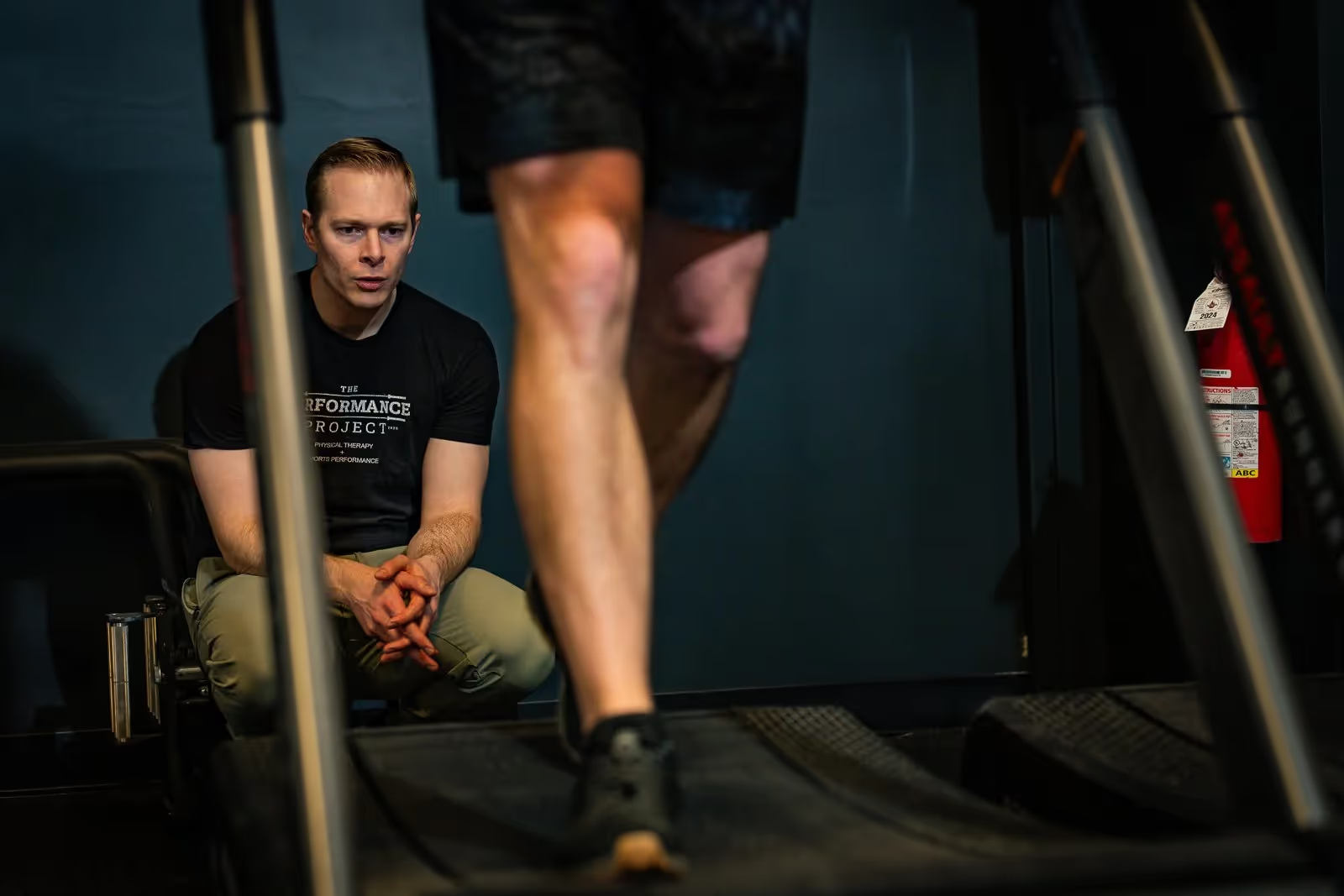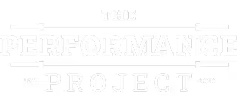Running gait analysis is a detailed assessment of how your body moves while running. It goes far beyond watching your stride—it evaluates biomechanics, joint angles, posture, and force distribution to identify inefficiencies or abnormalities that may contribute to pain, injury, or suboptimal performance.
At Performance Project PT in Centennial, CO, we use gait analysis to help runners of all levels move better and run smarter. Whether you're dealing with recurring injuries or just want to optimize your stride, gait analysis provides valuable insight into how your body behaves under load and speed.
READ: How Often Should You Get Dry Needling? A South Denver PT’s Recommendation
By capturing your movement on video and analyzing it with a trained eye, we can pinpoint exactly what’s working—and what needs to change. It’s a powerful first step toward safer, stronger, and more efficient running.

Performance Project PT, we recommend gait analysis for:
- Runners with a history of injuries like shin splints, plantar fasciitis, or IT band syndrome
- Anyone experiencing pain or discomfort during or after running
- Athletes preparing for races or increasing mileage
- Beginners who want to build a strong foundation from the start
- Cross-training athletes (triathletes, team sport athletes) looking to improve form and endurance
If your goal is to run longer, faster, or with less pain, a gait analysis can be a game-changer.
READ: Why Runners in South Denver Are Turning to Dry Needling for Injury Prevention
Key Components of a Gait Analysis: What We Look For
A running gait analysis is a comprehensive breakdown of your movement from the ground up. At Performance Project PT, we analyze multiple elements to uncover what’s helping—or hindering—your stride.
Here’s what we typically assess:
- Foot strike pattern: Are you landing on your heel, midfoot, or forefoot? This affects shock absorption and efficiency.
- Stride length and cadence: Overstriding or low cadence can lead to excessive loading and energy waste.
- Knee and hip alignment: Poor alignment may point to weakness or compensation that increases injury risk.
- Pelvic and trunk control: Excessive movement in the hips or upper body can reduce stability and speed.
- Arm swing and posture: Upper body mechanics play a key role in overall balance and rhythm.
We record your running from multiple angles and slow the footage down to analyze each phase of your gait—providing a clear picture of your mechanics in motion.
READ: From Injury to Victory: How Performance Project PT Fuels Colorado Athletes’ Comebacks
How Gait Impacts Injury Risk and Running Efficiency
The way you run has a direct impact on how your body handles stress. Inefficient mechanics—like excessive pronation, overstriding, or poor hip control—can lead to repetitive strain on joints, tendons, and muscles. Over time, these patterns may result in common running injuries like shin splints, Achilles tendinitis, runner’s knee, or low back pain.
But gait isn’t just about avoiding injury—it’s about maximizing your performance. An efficient gait conserves energy, allows for smoother transitions between stride phases, and promotes better shock absorption. Small adjustments to your cadence, posture, or foot strike can translate into noticeable improvements in endurance and speed.
At Performance Project PT, we use gait analysis to help runners identify and correct inefficiencies before they lead to breakdown—keeping you moving well and performing at your best.
Common Gait Issues in Runners and What They Mean
Every runner has a unique stride, but some patterns can signal problems that increase the risk of injury or reduce performance. During a gait analysis at Performance Project PT, we commonly identify the following gait issues:
- Overstriding: When your foot lands too far in front of your body, increasing braking forces and stress on the joints.
- Hip drop: Often a sign of weak gluteal muscles, this creates instability and strain in the knees and lower back.
- Knee valgus (inward collapse): May result from poor hip control or foot mechanics, contributing to patellofemoral pain or IT band syndrome.
- Excessive pronation or supination: Uneven foot mechanics can affect load distribution and lead to problems up the chain.
- Asymmetrical arm swing or trunk rotation: Disrupts rhythm and balance, often tied to core or shoulder mobility limitations.
Understanding these patterns helps us develop precise, individualized plans that address the root cause—not just the symptoms.
READ: What South Denver Athletes Should Expect After a Dry Needling Session: Recovery and Results
What to Expect During Your Gait Analysis at Performance Project PT
When you come to Performance Project PT for a running gait analysis, your session begins with a thorough discussion of your goals, training history, and any current discomfort or injuries. We want to understand how you move—and why—before we even assess your stride.
Next, we’ll have you warm up and run on a treadmill or flat surface while we record your movement from multiple angles. Using high-speed video analysis, we slow down your stride to examine key moments in each phase of your gait.
We’ll review the footage with you in real-time, pointing out movement patterns and explaining how they may be contributing to pain or inefficiency. From there, we’ll create a personalized plan, which may include gait retraining, strength exercises, mobility work, and education on proper form and footwear.
You’ll leave with actionable insights—and a clear strategy to run smarter and safer.
How Gait Analysis Informs Personalized Treatment and Training Plans
No two runners move the same way—which is why cookie-cutter solutions don’t work. Gait analysis gives us the data and insight needed to design a treatment or training plan that directly targets your unique movement patterns.
At Performance Project PT, your gait analysis results guide everything from exercise selection to mobility focus and progression strategy. If we see overstriding, we might incorporate cadence drills. If there's a hip drop, we’ll focus on glute activation and single-leg stability. Poor ankle mechanics? We’ll build strength and range where it’s needed most.
This approach ensures your treatment isn’t just reactive—it’s preventative and performance-driven. Whether you’re recovering from an injury or looking to optimize race-day performance, we use your gait data to tailor every detail of your rehab or training plan for better results.
Integrating Gait Retraining and Strength Work for Better Results
Fixing your gait isn’t just about changing how you move—it’s about building the strength and control to support those changes long-term. That’s why gait retraining and strength work go hand-in-hand at Performance Project PT.
Gait retraining involves subtle, strategic adjustments to your running form—like modifying cadence, improving posture, or refining foot strike. We use real-time feedback and video analysis to guide you through these changes gradually, helping your body adapt without overload.
READ: The Connection Between Dry Needling and Improved Mobility
At the same time, we integrate strength training to reinforce your new mechanics. Exercises focus on glute activation, core control, hip stability, and lower limb endurance—all essential for maintaining efficient, injury-resistant running form.
This dual approach helps ensure that improvements made during your analysis stick—leading to smoother, stronger running for the long haul.
When to Reassess: How Often Should You Have a Gait Analysis?
Running gait isn’t static—it evolves with your training, mileage, strength, and even your footwear. That’s why periodic reassessment is key to maintaining optimal form and preventing new issues from developing.
At Performance Project PT, we recommend having a gait analysis at these key times:
- After an injury to ensure your movement patterns haven’t changed during recovery.
- When increasing training volume or preparing for a new race distance.
- If you’re switching shoes (especially moving to a new style or drop).
- When pain or discomfort returns after a period of symptom-free running.
- Annually, as part of a preventative check-in for serious or consistent runners.
Reassessing helps catch small changes before they become big problems—and keeps your training on track as your goals evolve.
Getting Started with Running Gait Analysis in Centennial, CO
Whether you're aiming to run farther, faster, or without pain, understanding your gait is one of the smartest moves you can make. At Performance Project PT in Centennial, CO, we specialize in helping runners of all levels improve form, prevent injuries, and reach their full potential through personalized gait analysis.
Our expert team will guide you through every step—from assessment to action—delivering insights that translate directly into performance and comfort. You'll leave with a clear plan, a deeper understanding of your movement, and the confidence to push your training forward.
Contact us today to schedule your running gait analysis and take the first step toward stronger, smarter running.

